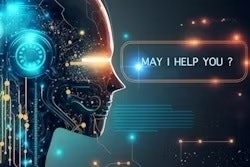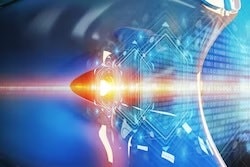Current and future applications of ChatGPT and other large language models (LLMs) in radiology hold immense promise for improving patient care and outcomes, according to an article published October 5 in Academic Radiology.
A group led by Suryansh Bajaj, MD, of the University of Arkansas, looked at evidence from various studies in the literature and identified areas where the technology is poised to have the biggest impact.
“Algorithms like ChatGPT, a type of LLM, can help in improving patient outcomes, increasing the efficiency of radiology interpretation, and aiding in the overall workflow of radiologists,” the group wrote.
Streamlining workflows
Evidence suggests that radiologists can use ChatGPT to ask questions about medical imaging, radiology procedures, and patient information, and receive accurate and relevant answers in real-time, the authors wrote. Furthermore, relevant clinical details can be extracted in seconds by the use of these algorithms, which can help radiologist to quickly protocol imaging studies.
Essentially, these capabilities can mitigate the need to look into exhaustive health records to answer every little query, the authors suggested.
Improving accuracy and consistency
Rather than being in a uniformly accepted structured format, many radiology reports are free-text dictations of findings. Here, ChatGPT and other LLM algorithms can help by automatically converting free-text reports in structured templates, the researchers wrote.
For instance, one recent study showed that converted ChatGPT reports did not have any errors and included all the key findings in appropriate sections without adding any additional information. Another recent study suggests that LLMs can be used to generate structured radiology reports, making them more standardized and easier to interpret, they noted.
Identifying and reporting discrepancies
LLMs can also assist in identifying discrepancies between radiology reports and electronic health records (EHRs), and thereby improve patient safety and care, the authors wrote.
Essentially, ChatGPT can be used to monitor the quality of radiology reports, ensuring that they are accurate and comply with medical standards. Studies suggest that errors like reporting of wrong laterality or imaging modality or technique can be avoided by the integration of these algorithms in EHRs, the authors found.
Enhancing medical education and research
By using ChatGPT, medical students and trainees can access information and receive training more efficiently and effectively, and this can improve their understanding of radiology and the diagnostic process, according to the researchers.
ChatGPT has been shown to clear radiology exams, such as two out of 10 Fellowship of the Royal College of Radiologists exams, as well as Canadian Royal College and American Board of Radiology exams, they wrote.
In addition, the authors noted that administrative tasks are another area where ChatGPT can be implemented. Some authors have suggested the use of ChatGPT in scheduling patient appointments, helping with the check-in process, and other administrative aspects of health care, they wrote.
However, the authors also noted challenges in the implementation and use of ChatGPT and LLMs in radiology, namely that it is currently difficult for AI algorithms to accurately analyze and interpret highly complex and heterogeneous data.
ChatGPT has been trained on a vast amount of text data, but the medical data, especially in radiology, is complex and often insufficient for the algorithm to give medical advice, they noted.
“Overall, ChatGPT can help improve patient satisfaction and streamline the workflow of support staff, leading to better patient outcomes and a more efficient radiology department,” Bajaj and colleagues concluded.
The full article can be found here.



















